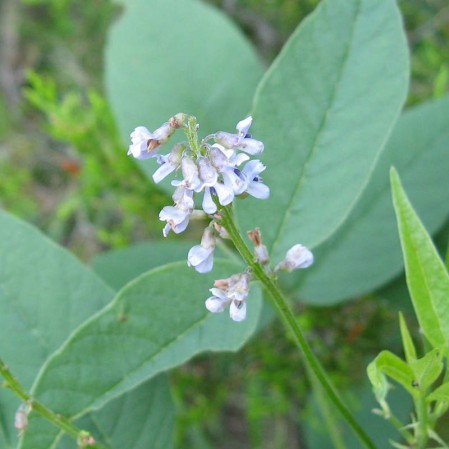French Grass Seeds
Psoralea onobrychis
- HOW TO GROW
- FAST FACTS
HOW TO GROW
Sowing: To help soften the hard coating on these seeds and speed germination, pour hot water over the seeds and allow them to soak for 24 hours before planting. Mix the soaked seeds with moist sand and store in the refrigerator for 10 days before planting. Plant in the spring as soon as the soil has warmed. Keep the soil lightly moist until germination.
Growing: Water seedlings regularly until they become established, and control weeds. Mature plants tolerate drought fairly well. Over time, this plant will spread by rhizomes to form a natural colony. This plant attracts bees.
Harvesting: These blossoms do not perform well as cut flowers, and are best enjoyed outdoors.
Seed Saving: After the flowers fade, oblong seed pods will form. When ripe, the seed pods will turn black; cut them off and spread them out to dry away from direct sunlight. Split the pods open to remove the seed. Store the seed in a cool, dry place.
FAST FACTS
Latin Name: Psoralea onobrychis
Species Origin: US Native Wildflower
Type: Native Wildflowers
Life Cycle: Perennial
USDA Zones: 4, 5, 6, 7
US Regions: Midwest, Southeast
Seeds per Ounce: 1,200
Stratification: Cold/Wet for 4 Weeks
Germination Ease: Stratify 4 Weeks
Sunlight: Full Sun
Height: 36 Inches
Color: Blue
Bloom Season: Blooms Late Summer
DESCRIPTION

HOW TO GROW
Sowing: To help soften the hard coating on these seeds and speed germination, pour hot water over the seeds and allow them to soak for 24 hours before planting. Mix the soaked seeds with moist sand and store in the refrigerator for 10 days before planting. Plant in the spring as soon as the soil has warmed. Keep the soil lightly moist until germination.
Growing: Water seedlings regularly until they become established, and control weeds. Mature plants tolerate drought fairly well. Over time, this plant will spread by rhizomes to form a natural colony. This plant attracts bees.
Harvesting: These blossoms do not perform well as cut flowers, and are best enjoyed outdoors.
Seed Saving: After the flowers fade, oblong seed pods will form. When ripe, the seed pods will turn black; cut them off and spread them out to dry away from direct sunlight. Split the pods open to remove the seed. Store the seed in a cool, dry place.
FAST FACTS
Latin Name: Psoralea onobrychis
Species Origin: US Native Wildflower
Type: Native Wildflowers
Life Cycle: Perennial
USDA Zones: 4, 5, 6, 7
US Regions: Midwest, Southeast
Seeds per Ounce: 1,200
Stratification: Cold/Wet for 4 Weeks
Germination Ease: Stratify 4 Weeks
Sunlight: Full Sun
Height: 36 Inches
Color: Blue
Bloom Season: Blooms Late Summer




